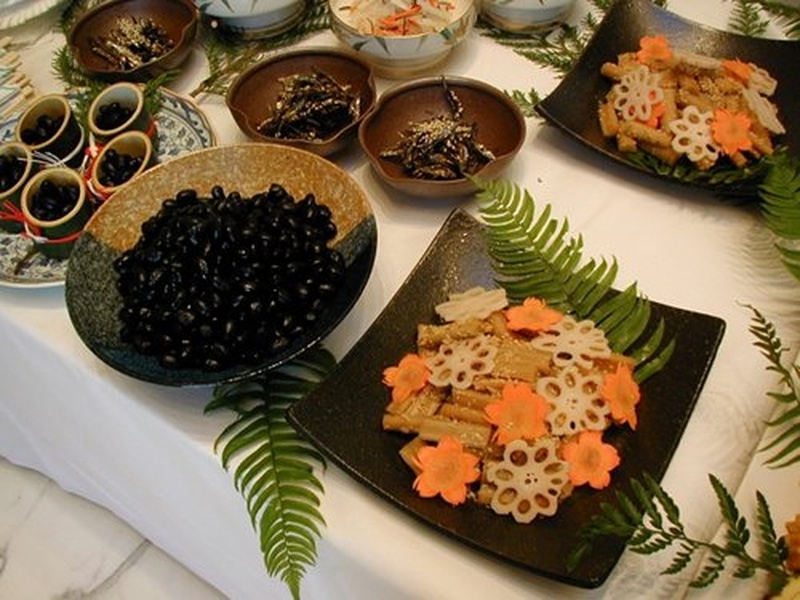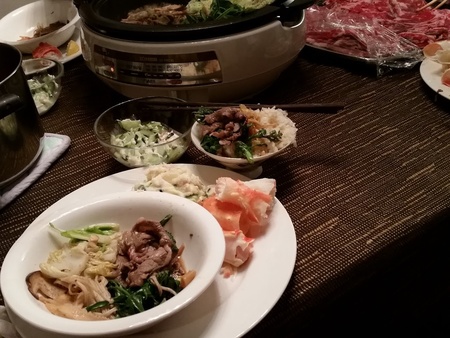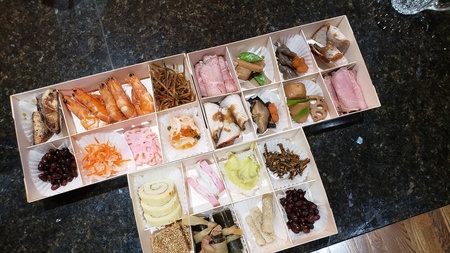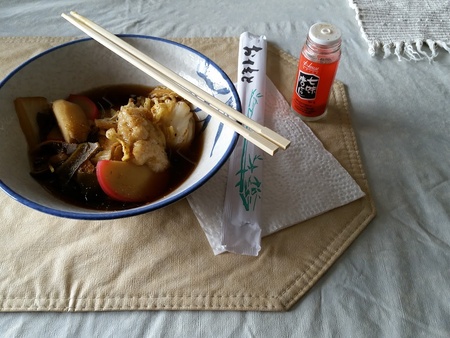It’s been a long, sometimes lonely three years since COVID-19 arrived in the world and changed all our lives. For many of us, this holiday season may be the first since the pandemic shutdowns when we’ll be traveling to visit family once again, and dining with them. (Of course, we didn’t know a historic deep freeze would disrupt nationwide travel over the Christmas weekend….)
If we’re lucky, we live not far from our parents and grandparents, and have been able to drive over for Sunday dinners or pick up takeout to enjoy with them this whole time. But if we live far—if we live across the country, for instance—and have to fly home for the holidays, well, we know how that’s gone during the pandemic shutdowns and mask requirements. After a family trip to Japan in October 2019, I didn’t step on a plane until this year. It still feels a little disconcerting to go through an airport and board a flight, when I’m the only one who tries to wear a mask except when I’m sipping my paltry soda water or tearing open the tiny packet of pretzels
Yet, we still dream of family gatherings, and getting together with old friends to celebrate milestones and holidays, and we finally are getting the chance to do that freely, if a bit cautiously (take those masks!).
Thanksgiving has passed us by. For the first time ever, my wife and mother-in-law and I went out to eat instead of cooking up the requisite turkey with fixings, stuffing, mashed potatoes with gravy, and for me, the highlight: that same gravy on hot white rice. Instead, we went out to an Italian restaurant chain that advertised a turkey dinner with a side of pasta (and the ability to order off their Italian menu, which we considered for takeout but had too much nokori to take home as it was!). It felt a little weird but also liberating, to not cook all day and clean all night.
Christmas for us has always been a family dinner with rotating themes, from sukiyaki (below, with crab) or shabu shabu to “breakfast for dinner” or an American Chinese spread (egg foo young with gravy—there’s a gravy theme emerging!). Things changed last year after my father-in-law passed away, and that’s one reason we chose the restaurant night out for Thanksgiving.
Christmas was also still different for us, despite many in-person holiday gatherings. We just haven’t committed to big family-and-friends celebrations. Instead, we opted to pick up Chinese food to go, and enjoyed our holiday meal at home, watching Netflix. Chinese restaurants have a long history of being Christmas day havens for Jewish and Asian diners (presumably, Buddhists) as well as others who don’t have a place to go. Recently, other restaurants have opened up on the holiday too. One Jewish friend bemoaned how the Chinese restaurants he went to have become too crowded on Christmas night. And in Denver, some of the American Chinese restaurants we frequent were closed so we picked a place based on online reviews.
I ordered our meal by phone while driving across town to Peter’s Chinese Cafe, and I was glad I did. The tiny restaurant was jammed with people waiting to pickup their orders (no indoor dining allowed), and people wandering in or calling while I was there were told it would take up to an hour and a half for their meals. The food was pretty good!
And looking ahead, of course, the Big One has always been Oshogatsu, the New Year’s Day celebration, when a variety of traditional Osechi Ryori dishes are served for good luck. When I first met Erin and was introduced to her extended family’s New Year spread, I was simply amazed.
My family always had some nice New Year’s Day dinners and my folks would invite a few friends over when we lived in northern Virginia, and later when we moved to Denver. My mom would make a lot of sushi and stack them in our round and square lacquerware boxes, and my dad would grill up some steak, or maybe yakiniku beef on the hibachi on the back porch. We never lived around relatives because we moved from Japan to northern Virginia, and then to Denver, and we always lived in suburban neighborhoods. I grew up with all white friends. My folks had some Japanese friends from my dad’s military days or my mom’s childhood who live in the area, but not enough for a big gathering.
Erin’s family, however has roots in the Denver area and many branches that have grown out from the family tree. So the first Oshogatsu I went to at her uncle’s house blew my mind. There were long tables arranged throughout the kitchen, dining room and living room covered with food brought potluck-style by all the guests, both traditional Japanese and non-Japanese dishes. (Part of a typical spread is shown here on the below.)
Erin’s dad used to cook up tempura and supplied the trays of sashimi ordered from the local Japanese market.
More recently, Erin cut the slabs of fish into perfect sashimi slices (right) and arranged them on trays before we took them over to the family gathering. My father-in-law also supplied king crab for the feast.
You could always count on Japanese traditions like Kuromame, sweet and savory black beans with a small sign for the uninitiated to take an odd number for good luck, and homemade mochi. And Japanese American stuff like multi-layered Jell-O, which I just love.
Last year, because we were still mourning, Erin and I ordered Osechi Ryori from a local Japanese bakery and café, The Enchanted Oven, to share with her mom, and it was great, three stacked bento boxes of compartments filled with a variety of traditional Oshogatsu items. We supplied our own mochi and Jell-O. (Osechi Ryori bento we picked up from The Enchanted Oven last year, below.)
We’ve ordered this excellent Osechi Ryori set again and will have another small, low-key celebration without the big gathering of family and friends.
One other tradition: before the big New Year’s feast with extended family, we always spent time in the morning with Erin’s folks, and her mom made Ozoni, the traditional New Year’s soup with dashi and mochi (below).
We’ll do that again with her mom.
I grew up with a different soup because my mom grew up in a small town in Nemuro and for New Year’s she always made Oshiruko or Zenzai, which is basically anko, the sweet red bean paste served thin as a soup, with mochi added in.
It was like slurping candy, so of course I always loved that.
These traditions live on in our community, and this year, thanks to COVID receding (though remember, it’s still around!) we can enjoy them again with our loved ones.
Happy Holidays, everyone, and have a wonderful, loving New Year celebration with friends and family … together again!
*This aritcle was originally published in the Pacific Citizen’s annual Holiday Issue and its edited version was from Nikkei View.
© 2022 Gil Asakawa












